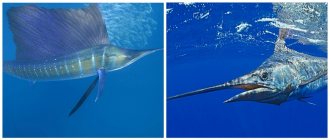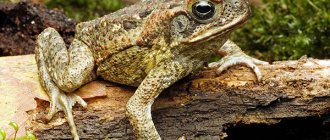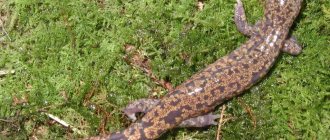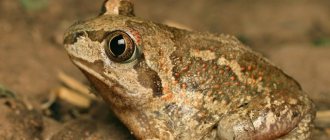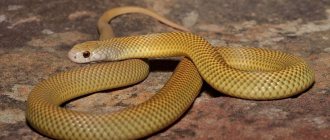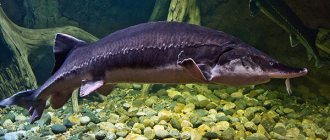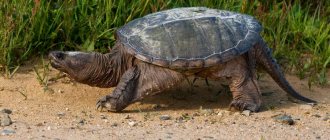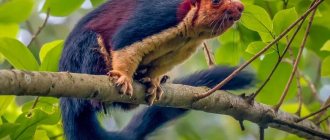Jellyfish are the oldest marine inhabitants, appearing hundreds of millions of years ago. These underwater inhabitants got their name because of their resemblance to the mythical creature - Medusa Gorgon. The body of these representatives of the marine animal world consists of more than 90% water. Their favorite habitat is salty waters. Translucent creatures are the object of research by scientists. The poisonous and largest jellyfish are of particular interest.
The ranking presents the most dangerous and largest jellyfish in the world.
Irukandji Jellyfish | 10 centimeters
The Irukandji jellyfish is one of the most poisonous Pacific jellyfish. The main habitat is Australian waters. The diameter of its dome is about 10 centimeters. Irukandji has four tentacles, the length of which can reach 1 meter. A jellyfish sting is dangerous to humans and can cause a number of unpleasant consequences: pain throughout the body, nausea, vomiting, tachycardia and even pulmonary edema. In rare cases, death may occur. Irukaji's venom has a slow-acting property, so symptoms may appear over several days. Despite its small size, it poses a certain risk for swimmers.
Giant squid
Stories about giant squids have been common among sailors since ancient times. They probably formed the basis of the legend about the kraken, a monster capable of sinking any ship.
The first surviving descriptions of giant squids were made by the ancient Greek philosopher Aristotle (IV century BC) and the Roman historian Pliny the Elder (1st century AD), who described a giant sea creature weighing 320 kg, whose head was the size of a barrel , and the tentacles are 9 meters long.
The body length of the largest known squid is 8 meters. Scientists believe that this is far from the largest representative of the genus.
Medusa Pelagia | 12 centimeters
Jellyfish Pelagia (Night Light) is one of the most beautiful disc jellyfish, which is common in the waters of the World and Atlantic Oceans, as well as in the Red and Mediterranean Seas. The body diameter of the jellyfish reaches 12 centimeters. The color of the umbrella is purple-red and has ornate frills around the edges. In addition to stinging cells and tentacles, Pelagia has four oral cavities. The jellyfish begins to glow the moment it comes into contact with any objects. The main living creatures that the Nightlight feeds on are benthos, sometimes fry and crustaceans. The jellyfish poses a certain danger to humans, since its injected poison causes burns and, in some cases, shock.
Alatina alata
It inhabits the waters of the world's oceans, is often found off the coast of Pakistan and causes many problems for swimmers. The jellyfish, whose length together with the tentacles reaches 15 centimeters, has paralytic poison. One bite of alatina alata can cause severe poisoning and lead to death. Small individuals are especially dangerous. They are transparent and practically invisible in water, which is why a person can touch them and get hurt.
Portuguese Man of War | 25 centimeters
Portuguese man-of-war (Physalia) - a jellyfish is a bubble in the form of a “sailboat” floating on the surface of the waters. The body of the “sailfish” is 25 centimeters, but the tentacles of Physalia can reach 50 meters, which it hides under water. It has a beautiful blue or purple color. The Portuguese man-of-war prefers to feed on fish larvae and small squid. Physalia is one of the most poisonous sea jellyfish. Upon contact with its tentacles, a person receives a severe burn, which is accompanied by acute pain. The injected poison can paralyze all vital organs, so it is difficult for a stung swimmer to stay on the water, and the person drowns. The Portuguese man-of-war is easy to spot from afar, thanks to its bright and beautiful coloring, so you can avoid encountering it while sailing.
The most dangerous, poisonous jellyfish in the world: the Australian killer jellyfish
The most dangerous, poisonous jellyfish in the world
The northern coast of Australia is a real tropical paradise. But at the end of the 19th century, scientists suspected that something incomprehensible was happening in this place. The fact is that strange things began to happen. People simply went into the water to swim, and then suddenly death overtook them - sudden cardiac arrest.
Scientists began to examine the waters, but did not find anything suspicious. The eyewitnesses themselves, who were close to the victims, also indicated that the water was perfectly clean and no marine life was swimming nearby. Sometimes strange red stripes appeared on people's bodies after swimming. But the swimmers themselves assured that the water around was clean and no one was swimming nearby.
This is how the most dangerous, poisonous jellyfish in the world stings
At that time, local residents began to make up stories about sea devils, but scientists did not believe in it. There were more and more new cases of incomprehensible deaths in the water. A man went into the water and such a nuisance happened to him. One day, an incident occurred in shallow water with a small child:
- A five-year-old boy was swimming and playing near the shore.
- Suddenly he felt bad, his parents ran up, but it was already too late - the boy died instantly - cardiac arrest.
- Nearby was a local biologist, Dr. Hugo Flecker . He asked the fishermen to cast their nets in the place where the child was playing and pull out whatever they found.
- The fishermen pulled out their nets and the scientist discovered a previously unknown jellyfish, which would later be called the “sea wasp . This is the most dangerous, poisonous jellyfish in the world.
The body of the Cubozoa or Box Jellyfish is so transparent that even in an aquarium, it can be seen if the water is illuminated with ultraviolet light. When the poison is released, severe pain permeates the body, the heart begins to beat strongly and cannot stand it, death occurs.
Interesting: The salvation from the Australian killer jellyfish is ordinary nylon. The fact is that the tentacles of this ocean inhabitant do not sting everything, but only a living organism or a potential victim. If you put a nylon suit on the body, then the tentacles, upon contact, give a signal that this is an inanimate object, and the poison is not released.
But a nylon swimsuit costs over $100 . However, it is short-lived, since nylon is a thin fabric. People found a way out by putting on 2 pairs of cheap nylon tights. One for the legs, the second (by cutting a hole) for the arms and upper body.
Aurelia | 40 centimeters
Aurelia (eared jellyfish) is one of the most common types of large jellyfish. Aurelia's body is almost transparent and reaches 40 centimeters. Numerous thin tentacles have stinging cells that strike prey. Four oral lobes resemble drooping ears, which is why Aurelia received the name Ushastaya. This species feeds mainly on plankton and crustaceans. The eared jellyfish does not pose a danger to humans, and its bite can only cause a burn. In Asian countries, Aurelia is used to prepare exotic dishes.
Reproduction and lifespan
Due to the change of generations during the life cycle, cyanea have the opportunity to reproduce sexually and asexually. Creatures have different genders, respectively, males and females perform different functions in the process of reproduction.
The special stomach chambers of males contain sperm, while females contain eggs. Cyana males release sperm into the external environment through the mouth. In females, the oral lobes contain brood chambers, when sperm enters them, they fertilize the egg. After this, planulae are formed, which are located in the water column, and then sink, turn into a polyp and attach to the bottom. After this, jellyfish larvae are formed from the polyp - small stars, which, as they grow, will reach gigantic proportions.
Australian Sea Wasp | 45 centimeters
The Australian Sea Wasp is the most poisonous inhabitant of the world's oceans. The main habitat of the species is the coasts of Indonesia and Australia. The dome of the Sea Wasp is 45 centimeters and is equipped with 60 tentacles, which can reach more than 3 meters when hunting prey. The sea animal has 24 eyes. It instantly stings a passing object in several places at once. Death from poisonous jellyfish stings can occur in just a few minutes. A swimmer who is stung receives enough to cause a heart attack and often drowns. It is quite difficult to notice this jellyfish due to its transparency. The Australian wasp feeds on small fish and shrimp.
Habitats
Cyanea lives in surface waters at depths of up to 20 meters. This is a predator that uses its tentacles as a trapping net, where a rather strong poison awaits the victim at the ends of the stinging cells. For small fish it is fatal, but for larger animals it leaves greater damage.
In humans, the largest jellyfish in the world's oceans can cause allergies and burns, but not death. The story “The Lion's Mane” by Conan Doyle, where two people die when they touch it, is a work of fiction.
And besides, it’s rare that a diver will swim in the Arctic without a wetsuit to protect him from the cold. It is interesting that when it gets to more southern latitudes, cyanea will never grow more than half a meter. When encountering it in warm waters without protective equipment, it is enough for a person to wipe the area of contact with vinegar.
The life cycle of this jellyfish is quite unique. It consists of polypoid (attached to the bottom) and medusoid types.
Cornerot | 60 centimeters
Cornerot is one of the largest sea jellyfish , living in the Black and Mediterranean seas. The weight of the sea dweller can reach 10 kg, and the diameter of the dome is 60 centimeters. For humans, Cornerot poses no danger and can only cause mild irritation upon contact with the tentacles. The umbrella of the cornet is a “haven” for small fish that hide under the dome from danger. This species feeds only on plankton. Jellyfish are actively used in medicine for the preparation of medicines, as well as in cooking. In Japan, Thailand and China, a variety of dishes are prepared from Cornerot.
Whale shark
The whale shark is a rare and little-studied species that is endangered
The documented record belongs to a whale shark 14 m long. A female 20 m long, caught by fishermen in Taiwan in 2002, is also known.
Unlike other sharks, the whale shark feeds primarily on plankton, swims very slowly and often does not respond to divers. The most fearless scuba divers take advantage of this and ride on the back of the fish, taking enviable photos.
Medusa Chrysaora | 1 meter
Jellyfish Chrysaora (Sea Nettle) - an inhabitant of the Pacific Ocean reveals the three largest jellyfish in the world. The body of an adult Chryasora can reach 1 meter, and its numerous tentacles can reach 4 meters. Tentacles severed from the body can exist separately in the depths of the sea for several weeks and sting. Sea nettle stings leave burns in the form of thin scars. Victims experience sharp pain and burning, but do not pose a danger to human health. Chryasora is one of the most beautiful representatives of its species, so the animal is often kept in oceanariums and aquariums. In the ocean, sea nettle feeds on plankton and small jellyfish.
Bell of Nomura | 2 meters
Nomura Bell (Lion's Mane) is one of the largest species of jellyfish living in the seas of the Far East. Nomura measures 2 meters in size and can weigh up to 200 kg. Marine animals cause harm to the fishing industry. A giant hairy ball gets caught in the net, tangling it. When the fishermen try to free the net, Nomura sharply stings the man. In case of an allergic reaction to the poison, death from a Lion's mane bite is possible. From time to time, large accumulations of Nomura are observed off the coast of the Sea of Japan.
Hairy Cyanea | 2.3 meters
Hairy Cyanea - ranks first among the giant jellyfish in the world. The body of individual individuals of Cyanea can reach 2.3 meters, and the length of the tentacles is 37 meters. The main habitat of this species is seas and oceans. These jellyfish rarely approach the shores and prefer to exist at depths of 20 meters. Giant Cyanea does not pose a serious danger to humans. Its bite can only cause a burn. Large individuals feed on plankton and other jellyfish.
105 8
Anaconda
There are many reports of water boas over 6 m in length, but none of them are reliable.
According to official data, the body length of the largest of the anacondas is 5.21 m, and its weight is almost 100 kg.
Adult anacondas usually do not exceed 5 meters in length, but many references to giant anacondas can be found. In 1944, an anaconda with a length of 11 m 43 cm was caught in Colombia. In the 60s, Swedish naturalist Georg Dahl talked about the capture of an anaconda with a length of 8.43 m.
